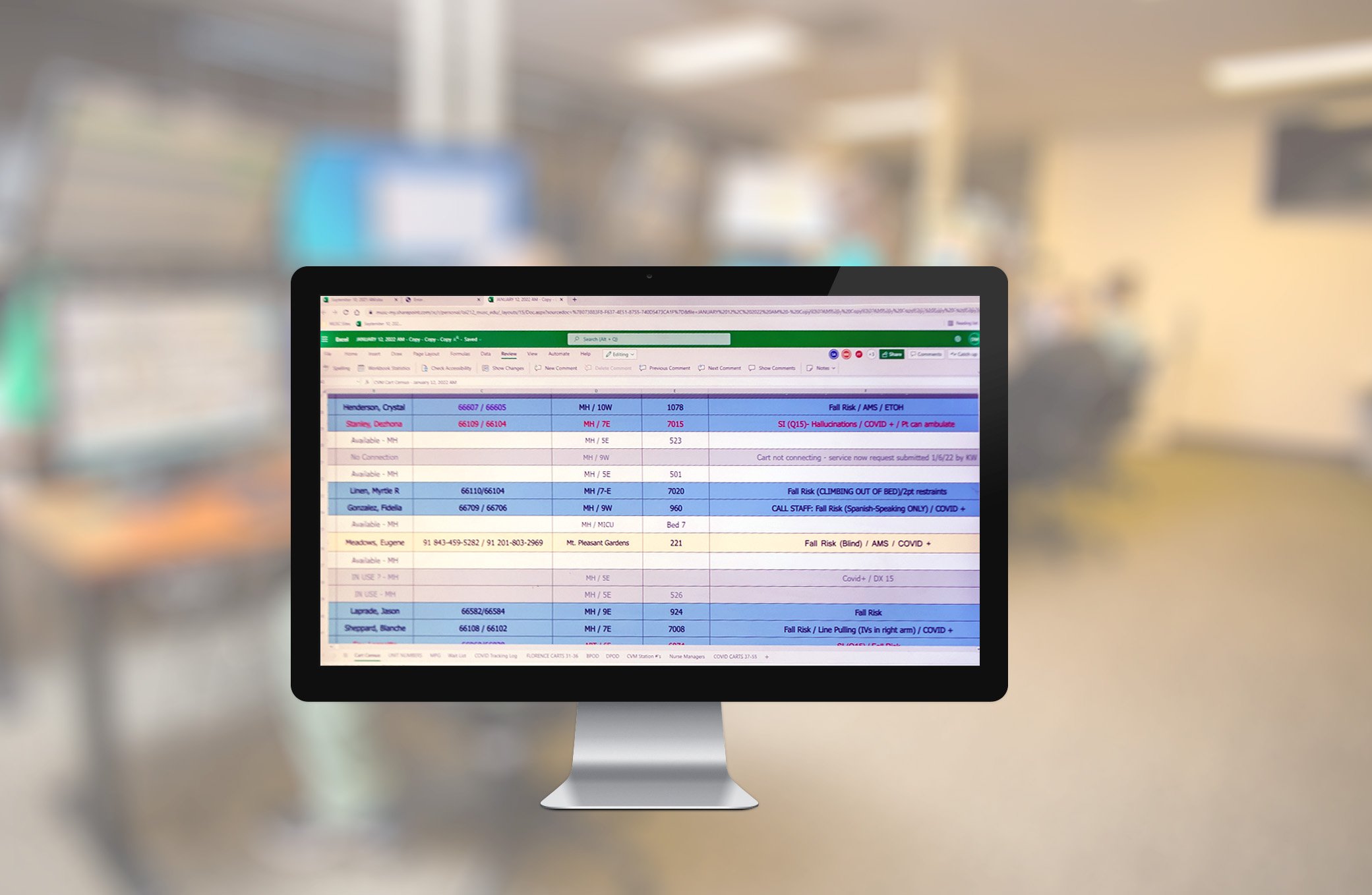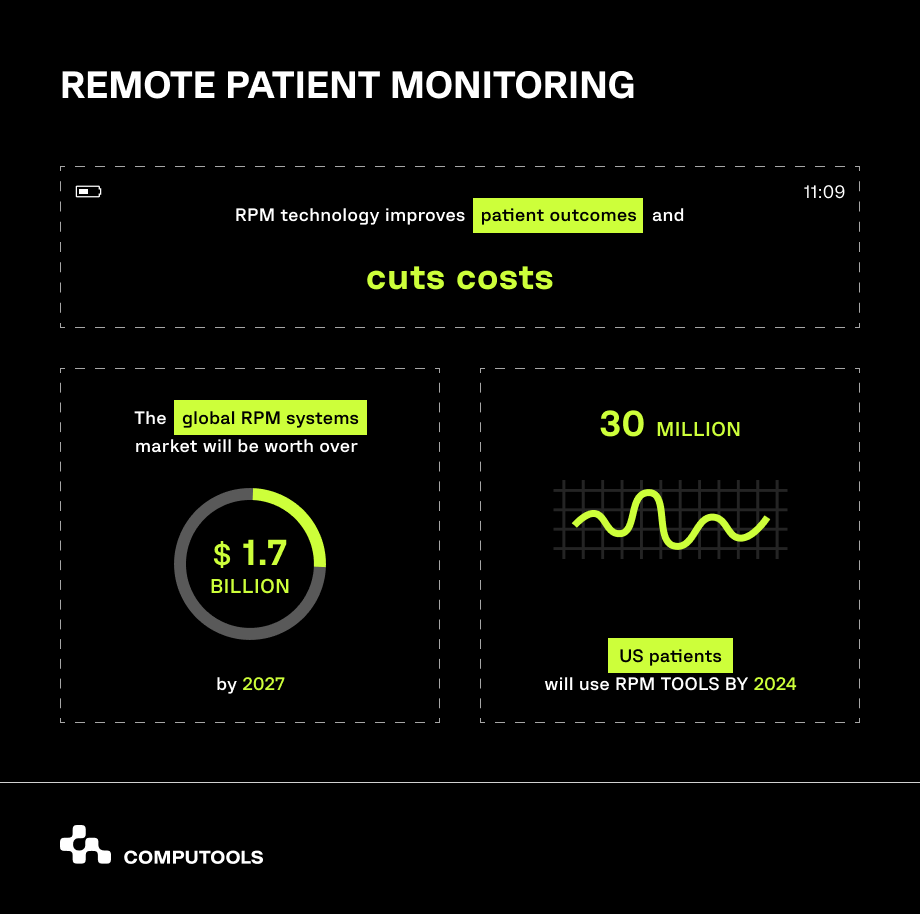The Future of Medical Care: Remote Patient Keeping An Eye On Streamlined
As health care proceeds to progress, one location that holds enormous assurance is remote person surveillance. With a focus on enhancing patient outcomes and streamlining health care delivery, remote monitoring is poised to revolutionize the industry.
Advantages of Remote Patient Monitoring
Remote patient monitoring offers a multitude of advantages for both doctor and patients alike. One substantial benefit is the capability to constantly check individuals' essential indicators and health and wellness data remotely. This real-time tracking allows doctor to find any type of worrying patterns or adjustments immediately, causing early treatments and potentially stopping medical emergency situations. Furthermore, remote person tracking boosts the general top quality of care by supplying a more all natural and extensive sight of patients' health and wellness standing beyond typical in-person gos to.
Furthermore, remote client surveillance can lead to enhanced individual outcomes and fulfillment. Clients can appreciate the convenience of receiving care in the convenience of their very own homes while still knowing that their health is being closely kept an eye on. This can cause raised individual interaction and adherence to treatment strategies, inevitably bring about far better health outcomes. In addition, remote monitoring can reduce the need for frequent hospital check outs, decreasing medical care prices for both people and service providers. Generally, the benefits of remote individual surveillance are clear, making it a useful tool in modern healthcare delivery.
Technology Driving Remote Surveillance
In the realm of modern-day health care, technical improvements play a pivotal duty in driving the evolution and efficiency of remote patient surveillance. The combination of innovative innovations such as wearable tools, mobile applications, and cloud-based platforms has actually revolutionized the method healthcare suppliers remotely manage and keep an eye on patient health and wellness - best remote patient monitoring software. These technologies make it possible for continuous real-time surveillance of important indicators, medicine adherence, and various other essential health and wellness information, permitting prompt treatments and personalized care strategies
One trick technology driving remote tracking is the Net of Things (IoT), which allows smooth connectivity in between medical gadgets and medical care systems. IoT gadgets such as smartwatches and wireless sensors transfer and gather client data to central systems, facilitating remote surveillance from anywhere in the globe. Man-made intelligence (AI) and equipment knowing algorithms additionally improve remote tracking by examining substantial quantities of individual information to identify patterns, forecast wellness fads, and sharp medical care providers to potential concerns.
Influence On Medical Care Shipment
With the combination of sophisticated innovations driving remote client monitoring, the effect on health care shipment is becoming transformative and progressively profound. Remote patient surveillance permits health care companies to provide even more aggressive and individualized like individuals, resulting in improved wellness end results and lowered health center admissions. By from another location tracking crucial signs, symptoms, and medicine adherence, health care professionals can interfere This Site early, stopping problems and enhancing the total high quality of treatment.
Moreover, remote monitoring boosts accessibility to healthcare solutions, especially for people in underserved or country locations. Clients can obtain constant surveillance and assistance from their homes, eliminating the requirement for frequent in-person visits. This not just saves time and decreases costs for both individuals and health care facilities yet likewise decreases the danger of direct exposure to contagious diseases, a critical factor to consider in the existing medical care landscape.
Furthermore, remote individual monitoring allows medical care service providers to much better focus on and allot sources care based on real-time data. By recognizing risky patients and intervening quickly, medical care distribution becomes much more reliable and reliable, ultimately leading to a much more sustainable and patient-centered health care system.
Improving Patient Results

Furthermore, RPM permits aggressive monitoring of persistent problems, reducing the possibility of acute worsenings and hospital readmissions. People take advantage of boosted comfort and comfort, as they can get care in their own homes while remaining linked to their doctor. This continuous surveillance not just improves patient satisfaction yet likewise fosters a feeling of empowerment and engagement in their very own health and wellness management.
Future Trends in Remote Surveillance
Accepting advanced technologies in remote individual monitoring is forming the future landscape of health care delivery. The future patterns in remote monitoring are anticipated to transform the way medical care is offered, making it More Info extra patient-centric and efficient. One considerable trend is the boosted use of wearable tools and sensors to accumulate real-time data, making it possible for doctor to keep an eye on patients constantly without the need for regular in-person visits. These gadgets can track essential indications, drug adherence, and task levels, supplying an extensive sight of the client's wellness status.

Moreover, telehealth systems are becoming much more innovative, enabling online appointments, remote diagnosis, and remote individual monitoring all in one integrated system (software for remote patient monitoring). This alternative strategy to remote monitoring is streamlining health care shipment, improving individual contentment, and ultimately, improving overall high quality of care
Final Thought
In final thought, remote person surveillance offers numerous advantages in healthcare delivery, driven by advancements in technology. It has the potential to improve patient outcomes and transform the way healthcare is delivered. Future fads in remote surveillance will certainly proceed to form the landscape of health care, offering chances for more efficient and customized client care.
Remote patient surveillance offers a plethora of advantages for both medical care providers and patients alike. Additionally, remote person surveillance boosts the general quality of care by giving a much more extensive and holistic view of patients' health and wellness condition past typical in-person gos to.
Furthermore, remote individual monitoring can lead to improved individual outcomes and contentment. Remote client surveillance allows medical care informative post companies to offer more tailored and proactive treatment to people, leading to enhanced wellness outcomes and decreased health center admissions. Remote client tracking (RPM) plays a substantial role in enhancing person outcomes by offering continuous, real-time information that makes it possible for healthcare suppliers to interfere promptly and change therapy strategies as required.